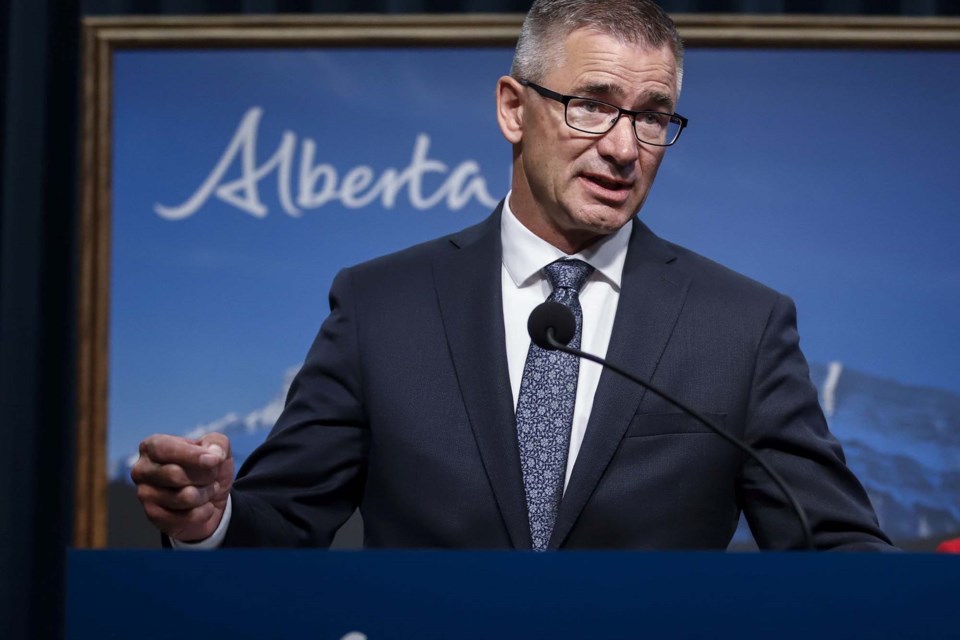The economy is recovering in Alberta, but unemployment rates remain high due to a mismatch of skills in the province, say experts.
On Feb. 24 Alberta released its 2022-23 budget and although it showed a climb in oil prices and a recovering economy, both the unemployment rate and job vacancy rate in the province remain high.
Alberta's Finance Minister Travis Toews said the unemployment rate is higher than seven per cent, but employers are still struggling to find qualified staff.
“I've been surprised at the real labour shortage that we see across regions, and actually across sectors. It’s really significant,” Toews said.
It is a complex problem, Toews said, but one factor is that many Albertans who want to get back into the workplace just don’t have the skills or experience to do it.
According to data from Statistics Canada, there is an 11.4 per cent vacancy rate in the accommodation and food services sector; a 5.8 per cent vacancy rate in transportation and warehousing; 5.4 per cent in construction; 5.7 per cent in arts, entertainment, and recreation; and 3.6 per cent in agriculture, forestry, fishing, and hunting.
University of Calgary economist Trevor Tombe said having a high unemployment rate and a high vacancy rate might be related to the COVID-19 pandemic.
“It's not just here in Alberta. You see high vacancy rates across Canada and the United States as well, and so this is an interesting feature of our COVID recovery where I don't really have a solid explanation,” Tombe said.
The economist said perhaps people are reluctant to go back to work after the pandemic.
This recession saw a huge spike in vacancy rates, but in prior recessions Tombe said there was a gradual increase in those rates as the economy recovered.
Since the 2015 recession there have been many job losses in oil and gas, construction, and some manufacturing sectors, and Tombe said those are areas where workers would need to be retrained to shift to different occupations.
“What we might end up seeing over the coming years is that many of the jobs lost in COVID are not going to come back. And so then retraining, helping adjust workers into other occupations and sectors, is the only way forward,” Tombe said.
To help battle the high vacancy rates in Alberta, the province launched the Alberta at Work program in the budget, which will see $600 million dedicated to getting people back into the workforce.
“Alberta at work will connect more young people with employment, break down barriers for underrepresented groups, and help Albertans who have been unemployed for an extended period of time get back to work,” Toews said.
The program will expand the collegiate learning model to help get high school students into in-demand post-secondary education and into high-demand jobs.
Alberta at Work will provide $47 million over three years in capital funding and $25 million over three years in operating funding to support collegiate programs and charter-school expansions.
The program will also earmark $171 million over three years to expand student enrolment in areas with skills shortages and will provide for around 7,000 additional new post-secondary seats in areas such as computer science, information technology, and data modelling, finance, and financial technology (fintech), engineering, health care, and aviation. Another $30 million will be provided for apprenticeship expansion programs.
Paul McLauchlin, president of Rural Municipalities of Alberta, said the need for this funding in rural Alberta is huge, and especially in the veterinary medicine field.
“We are probably short 800 vets and vet technicians in the province right now. We are in a crisis, especially large animal,” McLauchlin said.
Alberta at Work will help those who are currently seeking employment, Toews said, and the government will create additional job placement and integrated learning opportunities and low-income students will be able to benefit from new non-repayable support when enrolled in high-demand programs.




